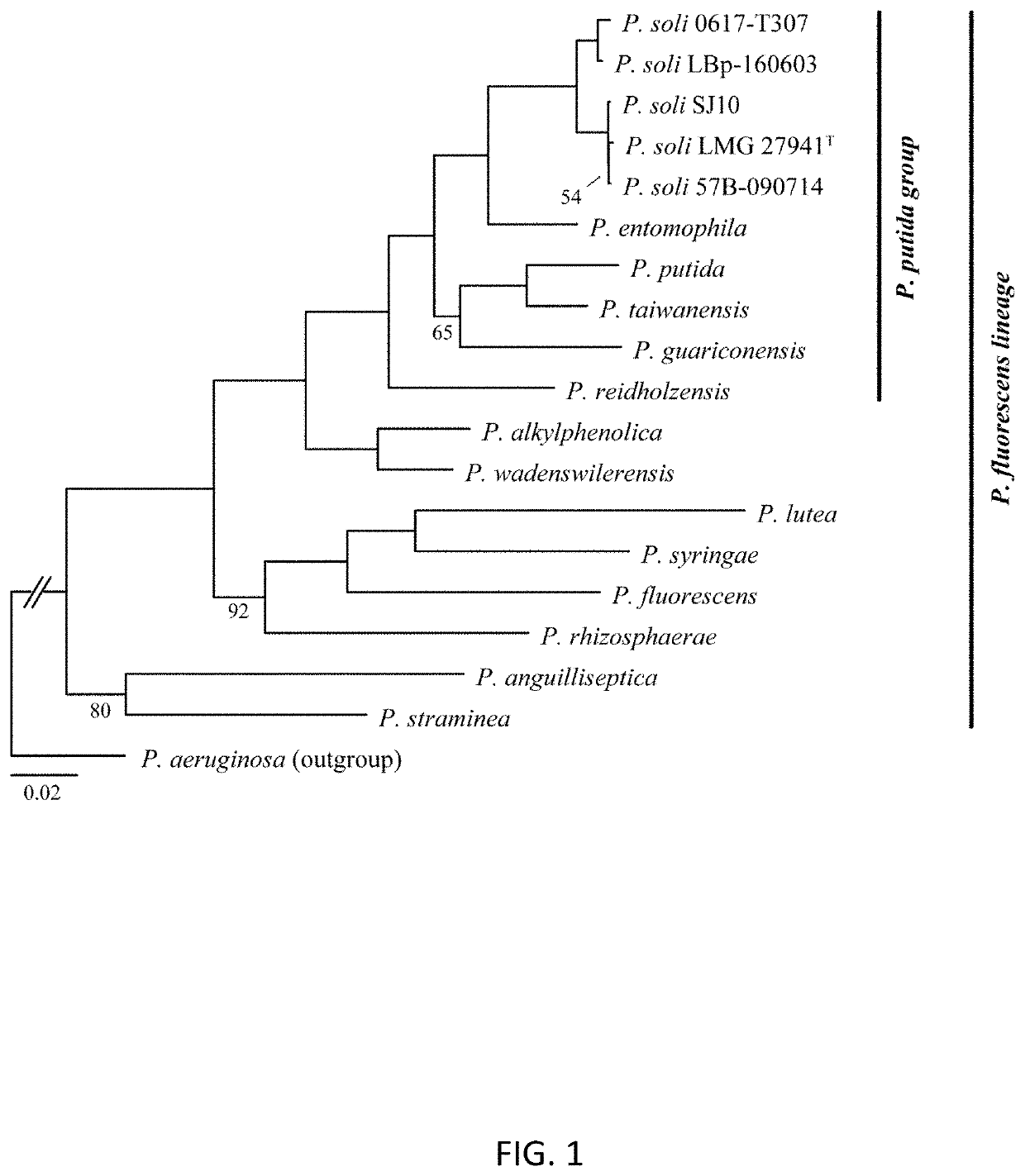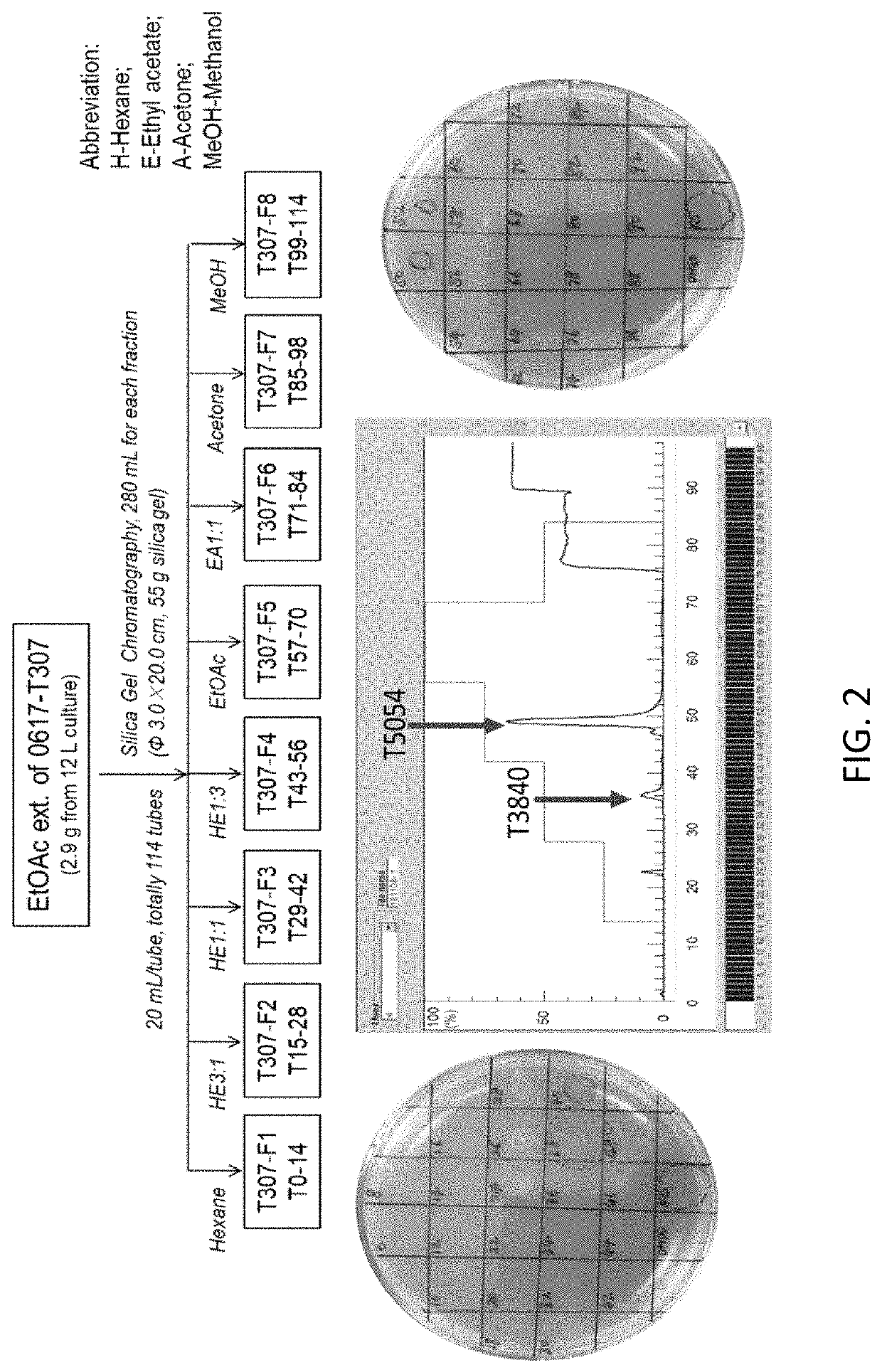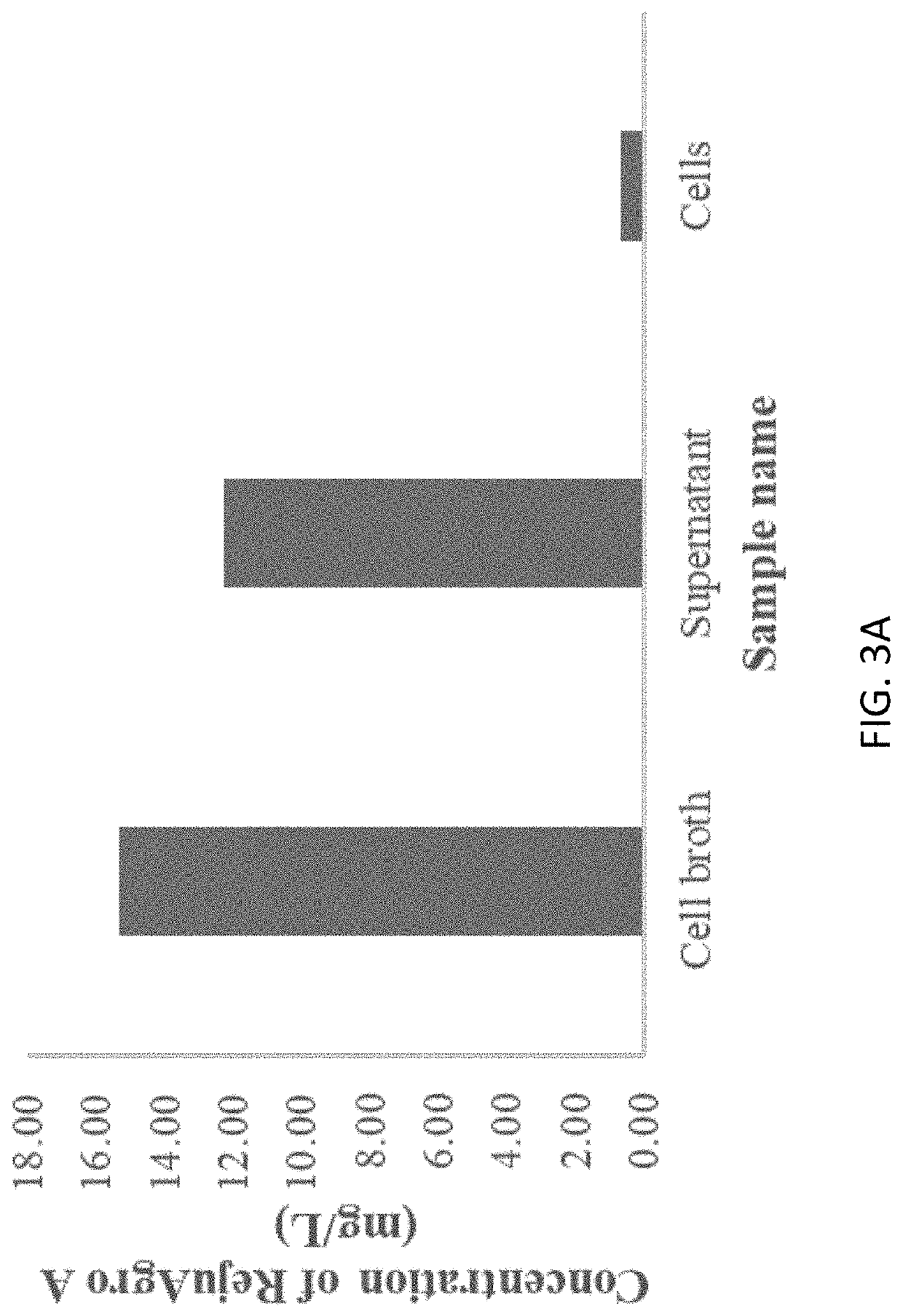Pseudomonas strains and their metabolites to control plant diseases
a technology of plant diseases and metabolites, applied in the field of biopesticides, can solve the problems of significant economic losses, increased cost, and increased cost of plant diseases caused by pathogenic microorganisms, and achieve the effect of enhancing the production of protective metabolites
- Summary
- Abstract
- Description
- Claims
- Application Information
AI Technical Summary
Benefits of technology
Problems solved by technology
Method used
Image
Examples
example 1
ation and Characterization of Strain 0617-T307
[0068]Partial sequences from 16S rDNA, gyrB, rpoB and rpoD were analyzed. These four genes are the recommended markers for multilocus sequence analysis (MLSA) in Pseudomonas species (Peix et al. (2018)).
[0069]For species assignment, these four sequences were used to run BLASTN against the NCBI non-redundant nucleotide database. Based on the result, strain 0617-T307 is closely related to Pseudomonas species in the P. putida group within the P. fluorescens lineage. The “MLSA phylogeny” and “list of genomes from the type strains of Pseudomonas spp.” of (Peix et al. (2018); see FIG. 2 and Table 2 in Peix et al. (2018)) were used as the guide for taxon sampling (FIG. 1). Based on this information, the genomes were obtained from GenBank. All species in the P. putida group with high quality genome assemblies were included. Because 0617-T307 has the highest rpoD (i.e., the gene with the highest resolution power for Pseudomonas species assignatio...
example 2
on, Isolation and Characterization of RejuAgro A and RejuAgro B from Ethyl Acetate Extracts of the Cell Broth of Strain 0617-T307
[0073]The preparation of RejuAgro A and B can be obtained by ethyl acetate extraction of the cell broth from the fermenter fermentation, followed by the chromatographic isolation and purification. Briefly, the stock bacterium Pseudomonas sp. 0617-T307 was streaked onto LB plate (Tryptone, 10 g / L; Yeast extract, 5 g / L; NaCl, 10 g / L; agar, 15 g / L; water) and grew in a 28° C. incubator for 24 h. For the preparation of seed media, single colony of 0617-T307 was inoculated into a 2.0 L flask containing 500 mL autoclaved YME media (yeast extract, 4 g / L; glucose 4 g / L and malt extract 10 g / L) and grow at 28° C. for 24 h in a shaking speed of 200 rpm. Then the seed media was inoculated into a 20 L NB S fermenter containing 12 L autoclaved YME media. The fermentation was proceeded at 16° C. for 1-7 days. The agitation speed and the airflow rate were 200 rpm and 2 L...
example 3
Antimicrobial Activity of RejuAgro A and RejuAgro B from Strain 0617-T307
[0082]The MIC values of RejuAgro A and RejuAgro B were determined for five types of bacteria: wild type gram-negative plant pathogenetic bacteria, streptomycin-resistant E. amylovora, fish disease causing bacteria, gram-positive and gram-negative human pathogenetic bacteria, and the producer of RejuAgro A (strain 0617-T307). The antimicrobial assay was performed according to the CLSI Antimicrobial Susceptibility Testing (AST) Standards. Briefly, the stock solution of each of the tested bacteria was streaked onto LB (Luria-Bertani) plate (tryptone, 10 g / L; yeast extract, 5 g / L; sodium salt, 10 g / L; Agar, 15 g / L). For special culture, NA (Nutrient broth+Agar) plate (beef extract, 3 g / L; yeast extract, 1 g / L; polypeptone, 5 g / L; sucrose, 10 g / L; and agar 15 g / L) was used for Xac. SHIEH (tryptone, 5 g / L; yeast extract, 0.5 g / L; sodium acetate, 0.01 g / L; BaCl2(H2O)2, 0.01 g / L; K2HPO4, 0.1 g / L; KH2PO4, 0.05 g / L; MgSO...
PUM
| Property | Measurement | Unit |
|---|---|---|
| Fraction | aaaaa | aaaaa |
| Fraction | aaaaa | aaaaa |
| Fraction | aaaaa | aaaaa |
Abstract
Description
Claims
Application Information
 Login to View More
Login to View More - R&D
- Intellectual Property
- Life Sciences
- Materials
- Tech Scout
- Unparalleled Data Quality
- Higher Quality Content
- 60% Fewer Hallucinations
Browse by: Latest US Patents, China's latest patents, Technical Efficacy Thesaurus, Application Domain, Technology Topic, Popular Technical Reports.
© 2025 PatSnap. All rights reserved.Legal|Privacy policy|Modern Slavery Act Transparency Statement|Sitemap|About US| Contact US: help@patsnap.com



